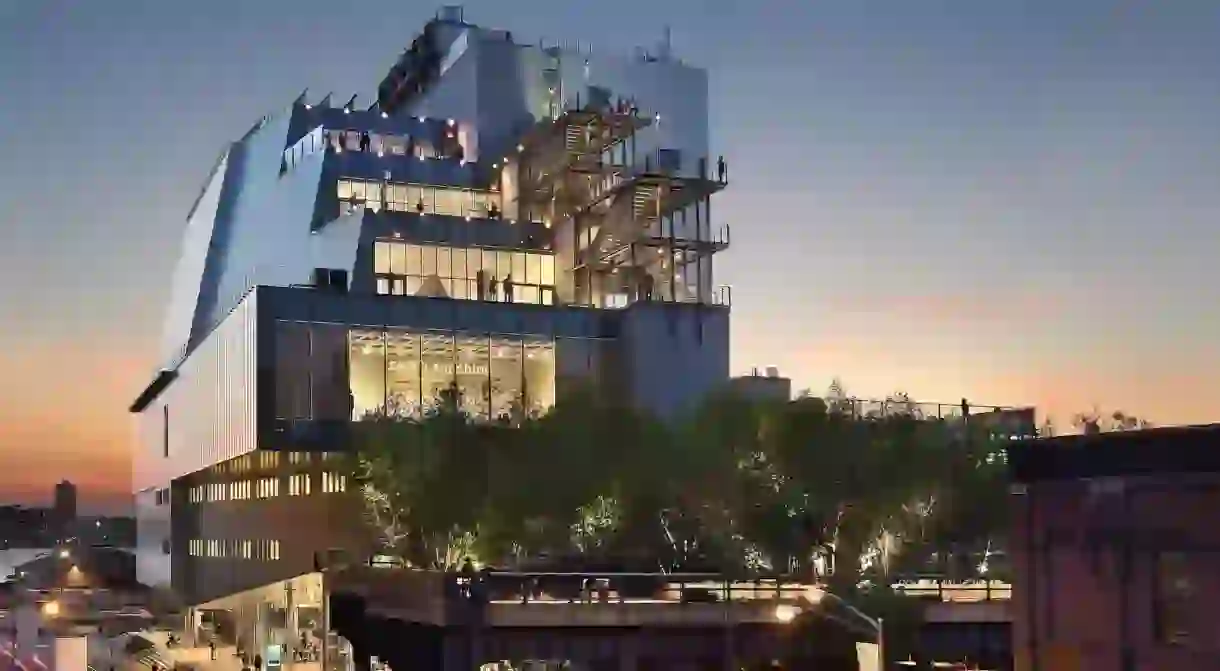Renzo Piano’s Work in Five Buildings

From the radical High Tech Centre Pompidou of the 1970s to the cutting-edge spherical design of the new Academy Museum of Motion Pictures in Los Angeles, Italian architect Renzo Piano has transformed cityscapes around the world. Here are some of his most iconic works.
Born in 1937 in Genoa, Renzo Piano is one of the world’s most esteemed and prolific architects, best known for his striking High Tech designs. From a family of builders, the Italian architect has always considered himself a builder as much as he is a designer, combining craftsmanship with cutting-edge technology to create sensitive yet unforgettable public spaces.

Centre Pompidou, Paris
This modern art museum in Paris was Piano’s big break. The multicoloured, “inside-out” Centre Pompidou was a radical high-tech design and a collaboration between Piano and Richard Rogers, both unknown architects back in 1977 when it was built. The idea was to put all the services on the outside of the building in order to create a vast exhibition space, free from partition or distraction, and to “democratise culture”. Its striking machine-like exterior certainly raised eyebrows, with then-president Georges Pompidou exclaiming “this will make them scream” when he saw the final design. Piano, a keen sailor and boat builder, likened it to a “bizarre boat in a dry dock” and has been known to refer to many of his buildings as “flying vessels”.
The Centre Pompidou paved the way for the High Tech movement, pushing the boundaries of technology, engineering and construction to create something the architectural world had never seen. Other High Tech buildings soon followed – the Lloyd’s Building, HSBC Hong Kong’s headquarters and the Sainsbury Centre for Visual Arts to name a few.

Jean-Marie Tjibaou Cultural Centre, Nouméa
Located on the capital of the Pacific island cluster of New Caledonia, this is probably one of Piano’s most unusual buildings. Built in 1998, the elegant design with its 10 pavilions resembles a series of majestic sailing ships, floating along the narrow strip looking out towards the ocean.
The Jean-Marie Tjibaou Cultural Centre was built to commemorate the island’s assassinated leader and to celebrate Kanak culture, but soon became more important than Nouméa could have ever anticipated. Piano’s building suddenly put this tiny island on the international map, as people flocked to see the architect’s striking new building.
It is innovative as well as sensitive, utilising green technologies that were well ahead of the eco building movement. The airy shell-shaped pavilions were apparently inspired by traditional Kanak village huts and were constructed using a mix of iroko wood, bamboo, glass and steel, combining traditional and sustainable materials with cutting-edge technology.

The Shard, London
Also inspired by his nautical heritage, Piano’s first British building references the ship masts that once anchored in the Thames, as well as the city’s towering spires. It’s hard to miss, being London’s tallest building at 1,016 ft, but not everyone agreed with the Shard’s controversial location on the Southbank. English Heritage called it “a shard of glass through the heart of historic London” when it was finished in 2013, but Piano believed the tapering tower’s light and elegant form would capture the hearts of the nation – and it has. He said on a tour of the building: “The reason that this building will be loved is because it will be accessible, because it is transparent, understandable and not mysterious. It is a public building.”
11,000 panels of hi-tech, low-iron glass were used for the project to give the appearance of crystal as it’s much clearer than regular green-tinted glass. The main concept for the building was a “vertical city” – a multi-use community in the sky that consists of offices, hotel rooms, public viewing platforms and restaurants. Building towers such as the Shard play an essential part in what Piano refers to as “transforming the peripheries” by using brownfield sites already available and “intensifying life in the city” to prevent further spreading.

Whitney Museum of American Art, New York
After Piano’s success with the Shard, the Whitney Museum of American Art followed in 2015. The Whitney transformed the city’s Meatpacking District with its sculptural form, hovering above the ground like an alien, disruptive object. This brave, hulky building is still sensitive to its surroundings, sandwiched between the Hudson River and the High Line. The gallery terraces act as vertical extensions of the High Line, reachable by industrial metal staircases that reference the fire escapes on New York’s brownstone buildings close by.
While not as “inside-out” as the Pompidou, the sentiment is still the same. The public plaza at the Whitney’s core and its galleries offer the same spatial freedom as its Parisian big brother. The architect wanted to reflect the liberty of the American artworks on display by creating lofty and airy spaces, with expanses of full-height glazing offering views across the Hudson and over Manhattan.

Academy Museum of Motion Pictures, Los Angeles
This striking new design from the Pritzker Prize-winning architect will give the bold red and silver Petersen Automotive Museum across the street a run for its money. Set to be completed in 2019, this building on LA’s “Miracle Mile” will be one of Piano’s most ambitious designs yet. A huge, floating glass-topped concrete sphere will be connected via three glass bridges to the original Saban Building, a Streamline Moderne-style department store that will be restored and converted into a 288-seat cinema, with spaces for exhibitions, special events and restaurants, as well as an entire floor dedicated to an “Oscars experience”. A 1,000-seat theatre will sit at the lower level of the sphere, while visitors will be able to gaze over the Hollywood hills from an observation deck above.

To find out more about Piano’s work, it’s worth visiting the Royal Academy’s exhibition Renzo Piano: the Art of Making Buildings, which runs until January 2019 and showcases 16 of Piano’s major designs.













